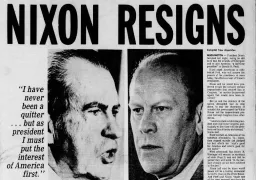Cuban Missile Crisis Begins

USAF U-2 reconnaissance pilot photographs Cubans installing Soviet-made missiles capable of carrying nuclear warheads.
Breaking The Sound Barrier

Seventy-five years ago, on October 14, 1947, the Bell X-1 Glamorous Glennis, piloted by U.S. Air Force Captain Charles E. “Chuck” Yeager, became the first airplane to fly faster than the speed of sound (Mach 1).
Chilean Miners

33 miners in northern Chile were rescued after spending more than two months underground. The copper and gold mine collapsed on Aug. 5, and they were trapped for 69 days — nearly half a mile underground — until they were rescued.
The White House

George Washington Lays the Cornerstone of the White House. The White House is an architectural masterpiece that has been the home of every president – except for the one who constructed it!
United States Navy

The United States Navy was established on October 13th when the Continental Congress authorized the acquisition of a fleet of ships for defense.
Grand Hotel in Brighton, England

The Provisional Irish Republican Army detonates at bomb at the Grand Hotel in Brighton, England, in an unsuccessful attempt to assassinate British Prime Minister Margaret Thatcher; 5 others are killed and 31 wounded.
Voskhod I

USSR launches Voskhod I, first spacecraft with multi-person crew; it is also the first mission in which the crew did not wear space suits.
Christopher Columbus

After a two-month voyage, Christopher Columbus landed on an island in the Bahamas he called San Salvador—though the people of the island called it Guanahani.
America’s First Spacewalking Woman

Astronaut Kathryn D. Sullivan, part of the crew of Space Shuttle Challenger, becomes the first American woman to walk in space.
21st Ecumenical Council

Pope John XXIII opens the 21st Ecumenical Council (Vatican II) with a call for Christian unity. This is the largest gathering of the Roman Catholic hierarchy in history; among delegate-observers are representatives of major Protestant denominations, in itself a sign of sweeping change.
